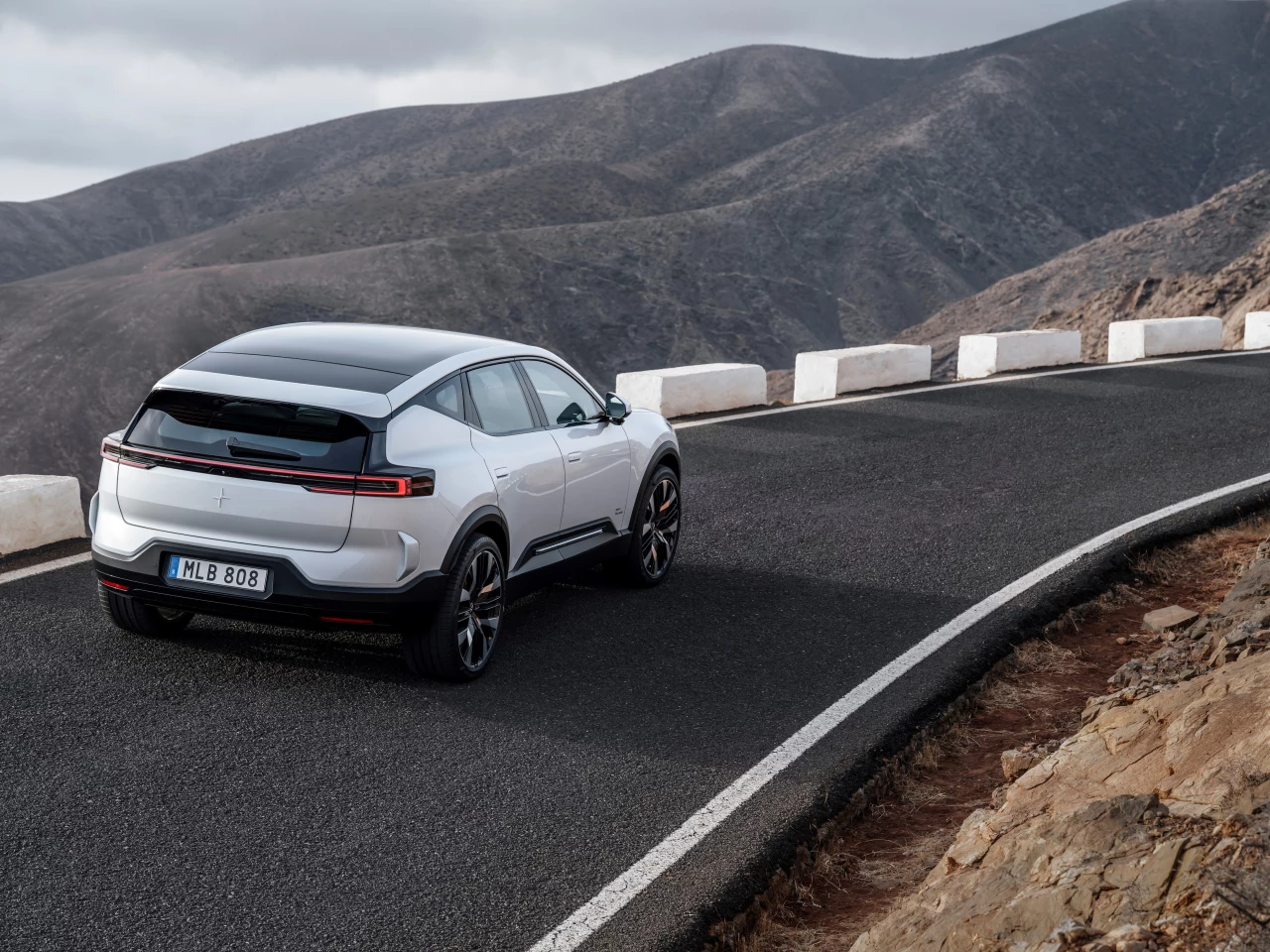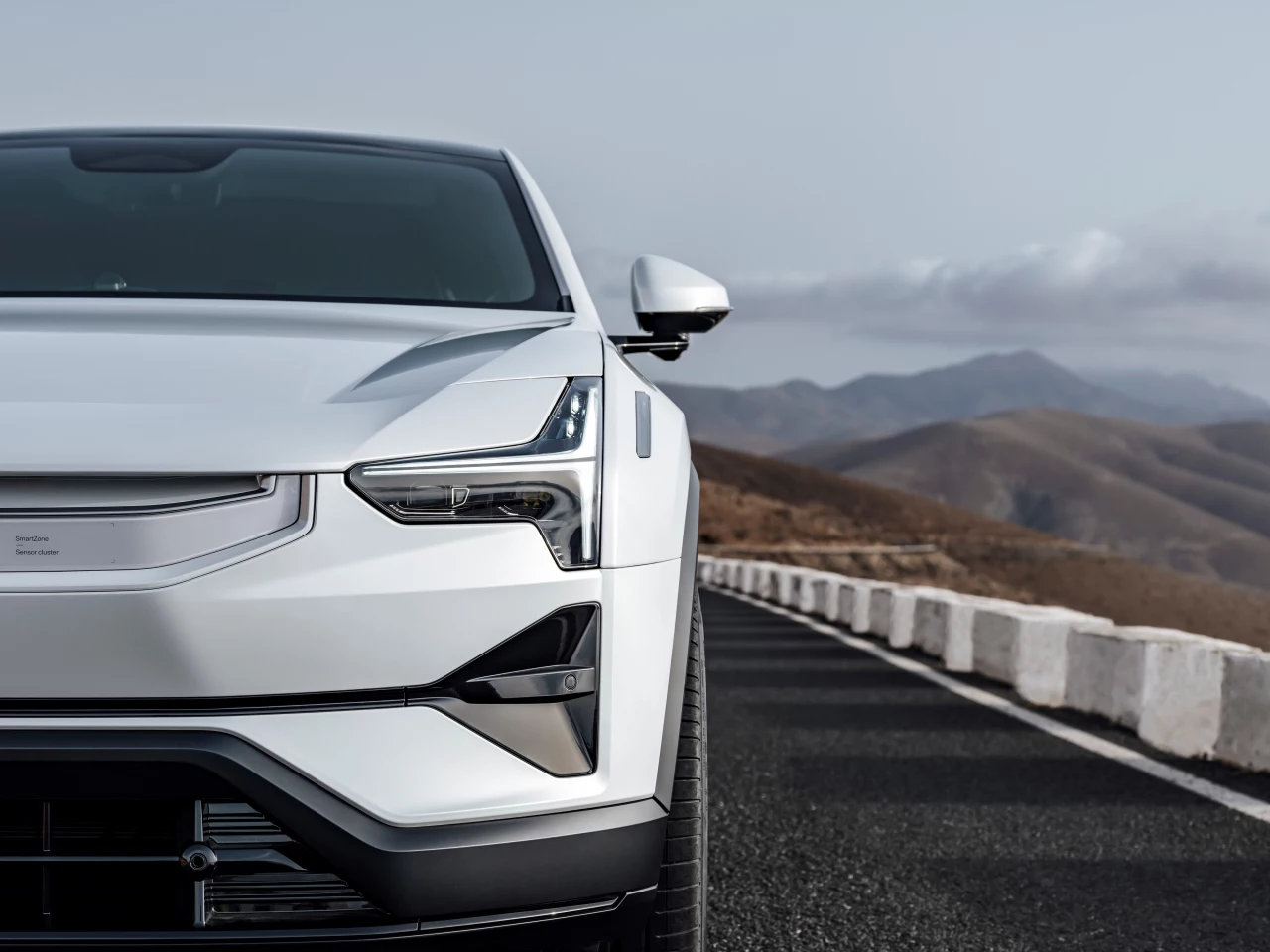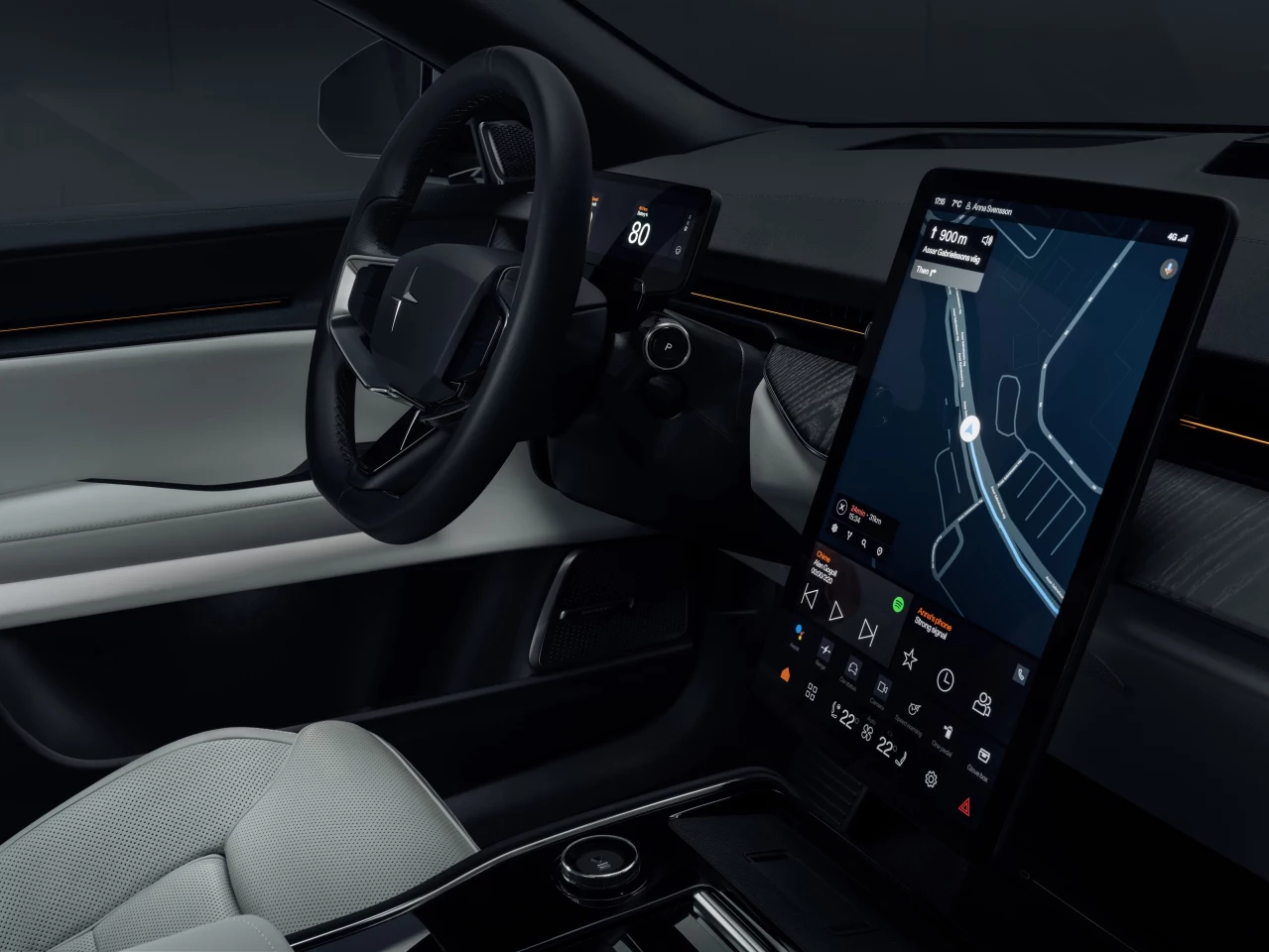The all-new Polestar 3 demonstrates once again that Polestar knows its consecutive numbers and knows how to make a good-looking EV. It took the company a little while to fully sharpen its design chops (by deleting the off-putting toothiness of the 1 and 2), but it seems to have found its rhythm. Its first SUV borrows the clean styling essence of the Precept concept and folds it into a 510-hp electric utility hot hatch platform that promises to make moving five people up to 379 miles (610 km) a zap more fun than it ever was in the old days.
Polestar previewed the 3 back in June, and it was clear from the very first picture that it would have a sporty, swept-back profile fronted by facial features rolled down from the Precept and O2 concepts. The Polestar 3 receives a little extra nipping and tucking up front, with a broader creased center panel tapering into triangular intakes at the sides. Each headlamp has also been toned down, from the mirrored dual checkmark blades of the concepts to a more integrated design we'll call the Thor's blade.
Farther back, the Polestar 3 shows the strength and purpose of an SUV, highlighted by simple, unembellished Scandinavian design. The flanks limit unnecessary lines and creases, split into upper and lower halves by a subtle outward bulge. A wide track lends strength, while a sloped, spoiler-tailed roofline adds sportiness befitting a 510-hp (380-kW) electric car.

The 193-in (490-cm) Polestar 3 relies on a 483-hp (360-kW) dual-motor all-wheel-drive. Buyers can up their way to the 510-hp max with the addition of the optional performance pack that also brings a performance tune for the standard dual-chamber adaptive air suspension, Pirelli P-Zero-shod 22-in forged alloy wheels, and "Swedish gold" accents.
The rear-biased AWD has dual-clutch torque vectoring at the rear, one-pedal driving and a rear motor decoupling for more economical FWD. The 3 can accelerate from 0 to 60 mph (96.5 km/h) in an estimated 4.6 seconds when equipped with the performance pack and 4.9 seconds in standard spec. Speed tops out at 130 mph (209 km/h).

Power comes stored in a large 111-kWh liquid-cooled 400-V lithium-ion battery pack that offers an estimated range of 379 miles on the generous WLTP. That estimate drops to 300 miles (483 km) under the EPA's stern, watchful eye. The 3 comes equipped for bi-directional charging, ready to offer vehicle-to-grid and vehicle-to-X power.
Polestar piles on tech, starting with the company's first use of centralized computing with Nvidia Drive core and Volvo Cars software. The system processes data from the robust sensor suite, which includes 12 exterior ultrasonic sensors, five radars and five external cameras, to empower a particularly integrated, comprehensive advanced driver-assistance system (ADAS). The setup even includes interior radar units tasked with detecting children or pets inadvertently left inside the vehicle.

An available add-on package slated to launch in Q2 2023 will advance driver assistance further with the addition of a Luminar LiDAR, an additional Nvidia control unit, three cameras, four ultrasonic sensors and cleaning for the front- and rear-view cameras. The package will improve detail of the car's 360-degree surroundings through enhanced 3D scanning.
Inside, below the standard full-length glass roof, the tech continues with an Android-Automotive-OS-powered 14.5-in infotainment display evolved from the Polestar 2's infotainment system. A head-up display and a 25-speaker B&W 3D surround sound system with Dolby Atmos capability will be available as part of optional upgrade packages.

The Polestar 3 will enter production in China in mid 2023, with launch-market deliveries to follow in Q4. In mid 2024, Polestar will begin US production of the Polestar 3, shifting the model's manufacturing for North America and other markets from China to Volvo's Ridgeville, South Carolina plant.
Polestar 3 ordering opened today, and pricing starts at US$85,300 (incl. destination fee) for the standard 389-mile "Long Range" dual-motor model and $91,300 for the version with performance pack.
Source: Polestar

















